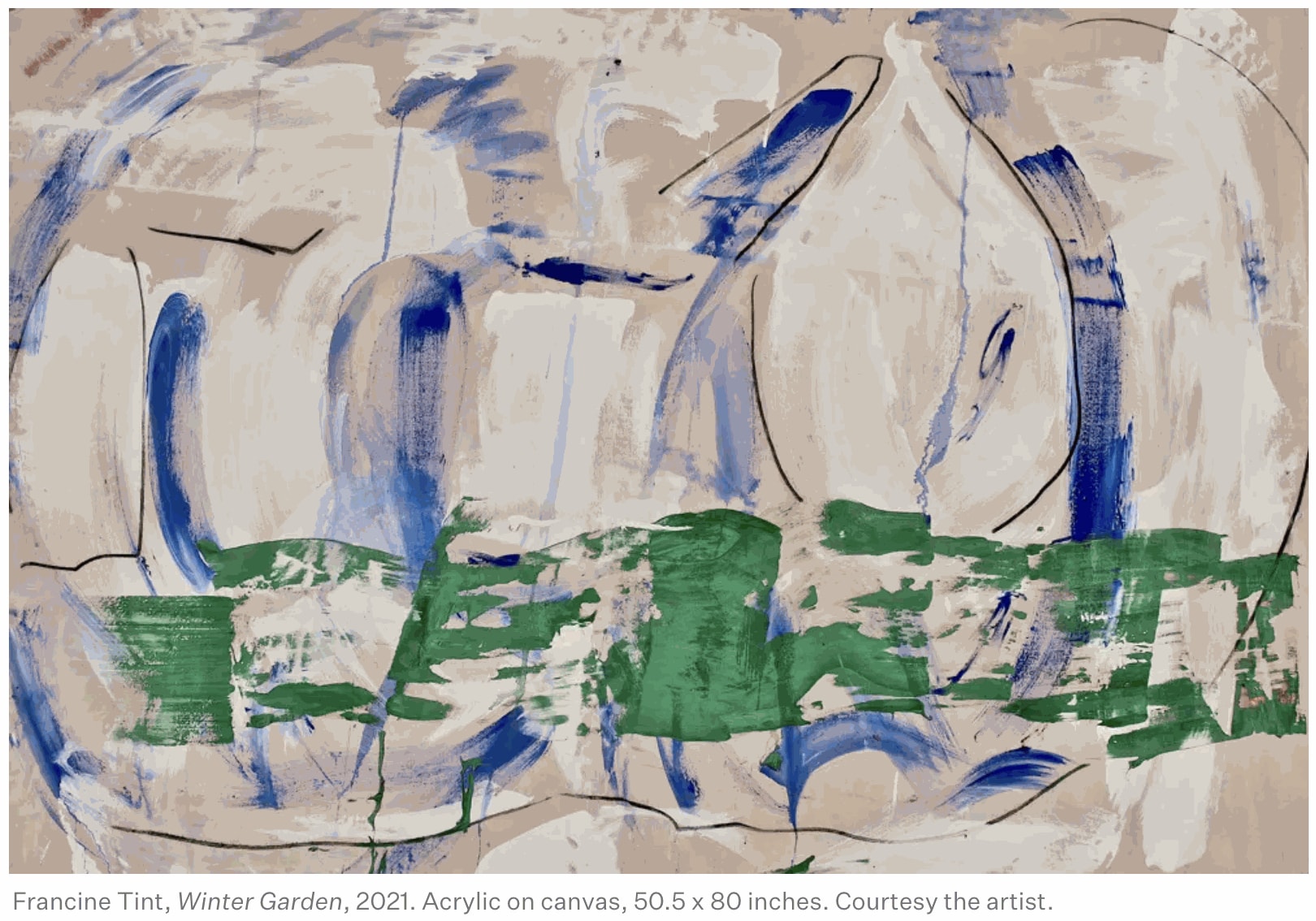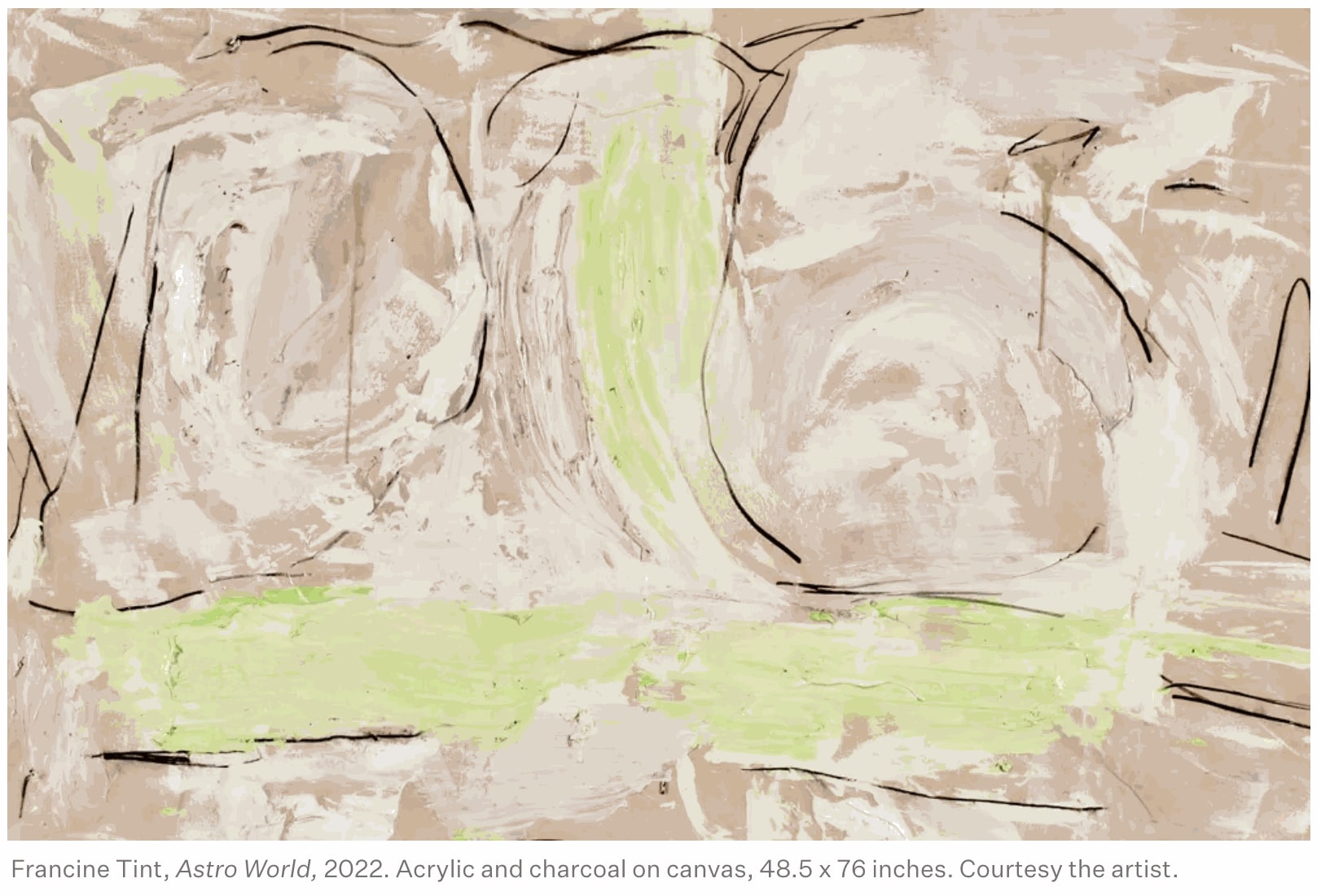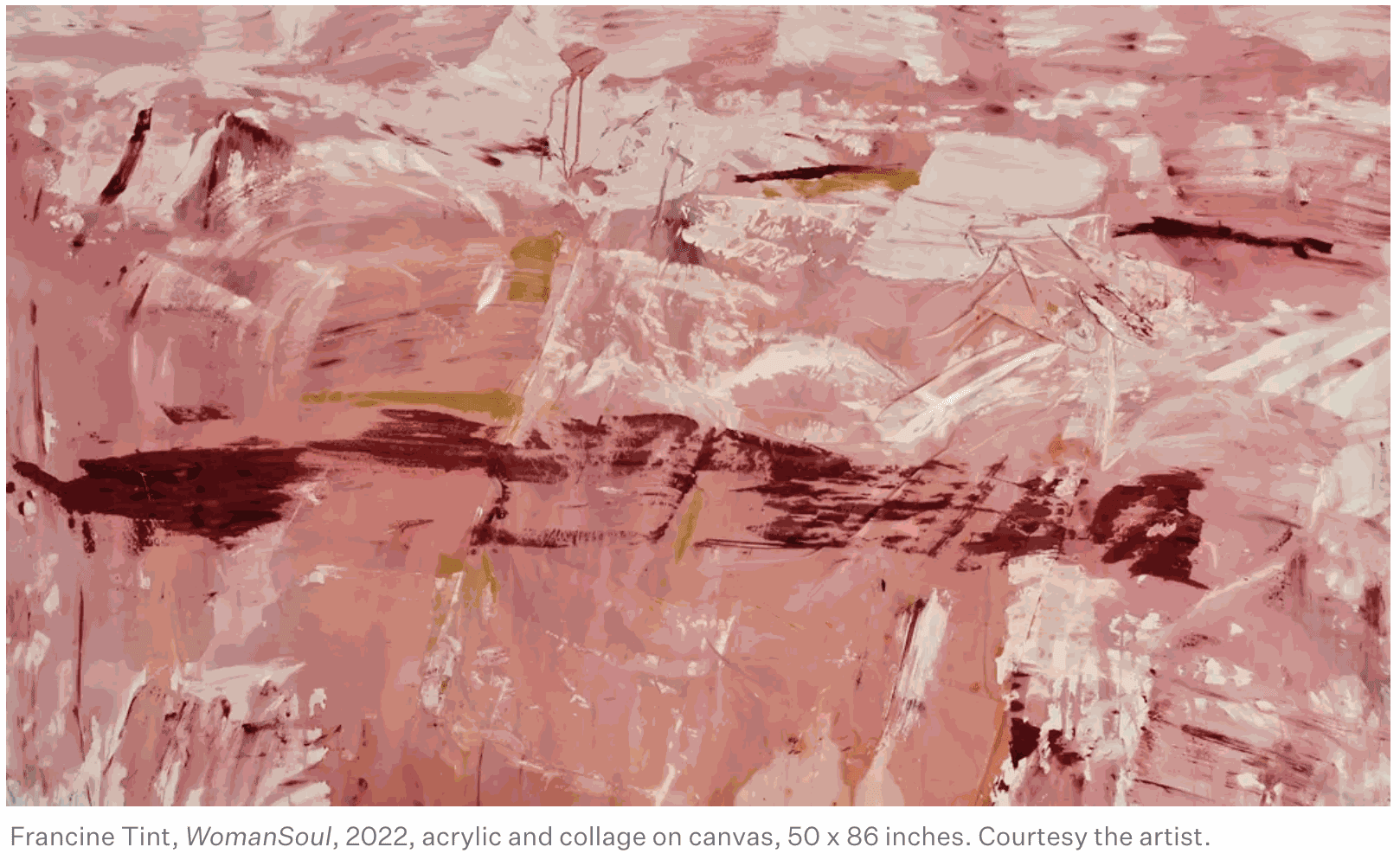
The work of veteran New York abstractionist Francine Tint was championed by uber-critic Clement Greenberg late in his career, and early in hers. Tint’s work explores the realms of Abstract Expressionism and Color Field painting promoted by Greenberg, but like her friend and likeminded artist-colleague Larry Poons, Tint has followed an improvised, idiosyncratic path. She has struggled against the kind of doctrinaire formalism to which artists associated with Greenberg have often been tethered. For the past several decades, she has produced large-scale gestural paintings with brilliant color and rich impasto. Applying Hans Hofmann’s “push and pull” esthetic for her own purposes, Tint uses staccato markings and searing color in often-radial compositions to convey a wide range of mood and ambiance. She has maintained in her works over the years a consistently assured touch and an adventurous sense of color and mark-making, while avoiding any form of preciousness in the brushwork. Although she favors a forceful and sometimes-aggressive attack on the canvas, the aim is toward a kind of Zen perfection and calm in the end.
Mostly large canvases (up to 6 by 10 feet) painted within the past three years, in the midst of the pandemic, the works on view in Francine Tint: Life in Action appear as luminous and effervescent as any she has made. But within the parameters of the visual vocabulary she has established over decades, Tint reveals a highly nuanced range of emotional states—from exuberantly euphoric to introspectively pensive. Works such as Gravity’s Rainbow and Wild Strawberries (both 2022), with their bold, circular brushstrokes in hot pink, bright reds, blues, and leafy greens, convey a sense of elation while unabashedly demonstrating her painterly prowess.

Meanwhile, more tonally subdued compositions, such as Winter Garden (2021) and Astro World (2022)—two of the most evocative works on view—feature thin, sinuous, and deftly drawn dark lines against raw canvas that act as a kind of armature to support irregular circular and oval forms in creamy white. Tint suggests an ethereal light and a rather hypnotic rhythmic motion in these works—as well as in the mural-scale Vernal Equinox (2021)—offering a quiet, more personal meditation for each viewer.

Some of the best paintings reference unexpected art-historical antecedents, such as Homage to Artemisia (2021), for instance, in which Tint channels, via her abstract iconography, the visceral energy and intensity of Artemisia Gentileschi’s Judith Slaying Holofernes (c. 1620). Here, Tint’s slashing brushstrokes of blue, purple, and white traverse a dark, expansive field suggestive of the violent scene and nocturnal background in Artemisia’s fierce, Baroque masterpiece. Tint embraces the feminist aspects of Artemisia’s story in at least the title of a large horizontal composition, WomanSoul (2022). The hyperactive canvas features a vibrant ground of red-orange and white impasto, with collaged pieces of white cloth, succinctly stabilized by an expressive, skittering line of deep, blood-red brushstrokes dashing across the center. In this work, Tint hints at her own position as a woman artist who has advanced the processes and strategies of (typically male-dominated) Ab Ex and Color Field painting toward a visual language uniquely her own.


